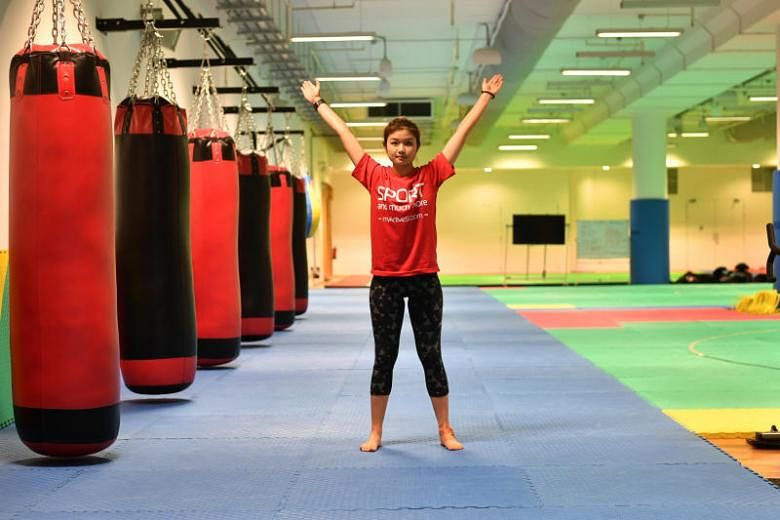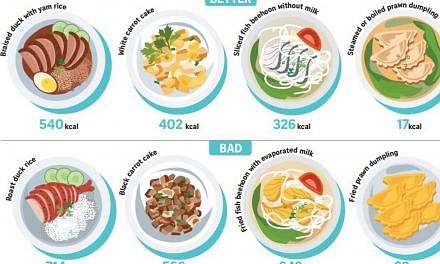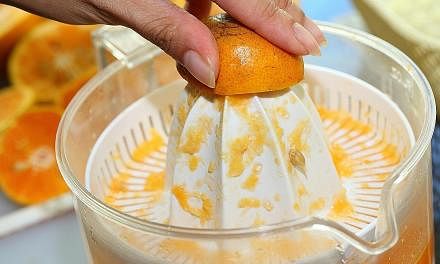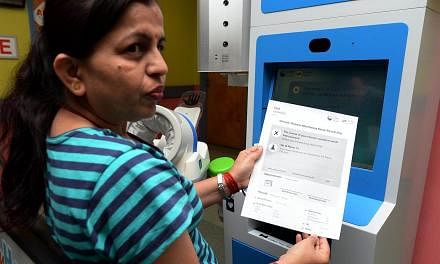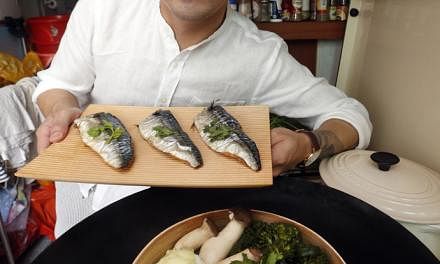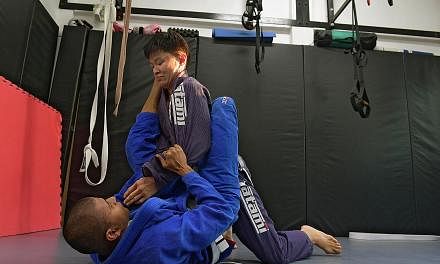You don't need to be a gym rat to become fit and healthy.
Exercising just 10 minutes, three times a day for five days a week, will help you meet the national physical activity guidelines, said ActiveSG manager and trainer Kenneth McGeough.
The guidelines for those aged 19 to 49 years old - set out by the Health Promotion Board (HPB) - is 150 minutes of moderate-intensity or 75 minutes of vigorous-intensity exercise per week.
"What is not known is that the exercise can be accumulated in multiple bouts of at least 10 minutes," said Mr McGeough. This is useful since "time is often identified as the biggest barrier to exercise for working adults".
The latest obesity statistics released by the HPB last month reviewed data collected over nearly 30 years. It found that the biggest increase in the proportion of overweight people came during the transition to working life.
This is not surprising. What is discouraging, though, is that while the numbers show that Singaporeans are exercising slightly more, the health benefits are outweighed by how much more they eat.
People have added two to three more minutes of exercise every day, with 59.6 per cent saying they did 150 minutes of physical activity a week in the third quarter of last year, compared with 54.3 per cent in the first quarter of 2014.
However, Singaporeans' calorie intake is also on the rise, with six in 10 exceeding their recommended daily intake in 2010. On average, they consumed 2,624 calories every day then, a marked increase from the 2,062 calories in 1998.
A man requires about 2,200 calories a day, while a woman needs about 1,800 calories.
WORK, STRESS AND LACK OF SLEEP
So, besides time, what else is keeping people from exercising?
Work commitments and its attendant stress are major factors, said Mr Kelvin Chua, founder of private education institute International Sports Academy.
"After a day of hard work, most people would be exhausted and feel they've got no more energy for physical activities," he said.
"They may have led an active lifestyle before they started working. But with less time and energy, most people would choose something less taxing, such as drinking, going to the movies and listening to music, instead of going to the gym or soccer field."
Mr McGeough thinks that lack of sleep and the city environment do not gel with exercise.
"Sleep-deprived people will crave stimulants like caffeine and high- sugar foods, resulting in peaks and dips in blood sugar levels, and reducing their desire to exercise."
The city environment is "designed in a way that does not promote physical activity", said Mr McGeough. Escalators and elevators are available in nearly every building, and stairs hard to find.
GET MOTIVATED

One of the simplest ways to exercise is to incorporate physical activity into your daily routine. For example, climbing the stairs elevates your heart rate and increases blood circulation, said Mr McGeough. It can also help maintain body muscle tone and improve balance.
Mr Chua suggested doing exercises before a shower, by stretching the chest, shoulders, arms, hips, thighs and calves, followed by push-ups, sit-ups and squats.
You can use fitness apps and trackers to monitor your progress. "If a person is self-driven, fitness apps and trackers would work well for them," said Ms Edwina Tan, a personal trainer at Pure Fitness.
If exercising on your own is a drag, you can join group exercise classes.
These include high-intensity classes, which gyms here said are popular during lunch hours.
"In a group setting, you can get support and motivation from the instructor and the other participants," said a spokesman for fitness chain True Fitness.
Ultimately, whatever you choose, the exercise should be something you enjoy.
"The biggest misconception about exercise is that it has to be tough, tedious, sweaty and no- pain-no-gain," said Mr Chua.
"The fact is that different routes can lead to the same destination. We should choose something that is enjoyable to suit our needs."
